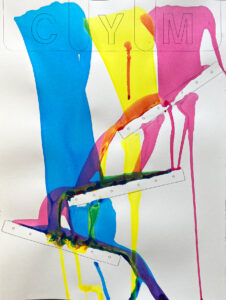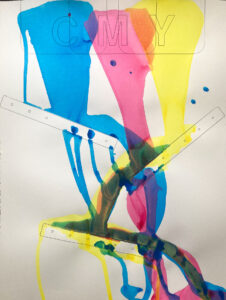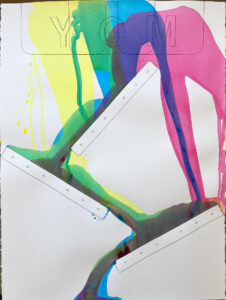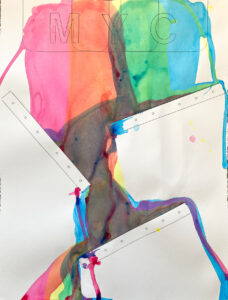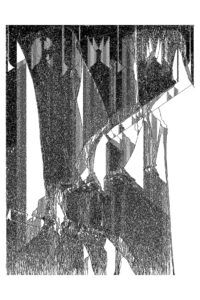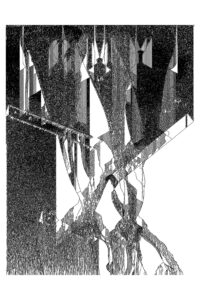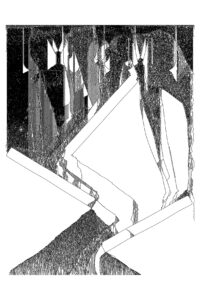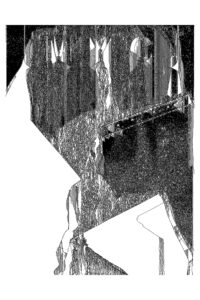This work investigates the physical properties of paint as a liquid, and explores the process and traces left by its movement across a paper surface.
The processes by which rivers flow and shape the landscape serve as analogs, and inspired the title, but the goal is not to reproduce river geology. Instead, the focus is on artistic production, and in particular the development of a process as a creative (or generative) idea. Consequently, the work is conceptualized as two layers. The first (and therefore lower) layer is a diagram of the process by which the work will be executed. The second is an indexical trace of the execution of that process.
More concretely, the first layer provides a map of where different paint colors (cyan, magenta, or yellow; these are “process” colors used in commercial printing) will be poured, which direction is “up” (higher elevation), and where obstacles (heavy steel bars) are placed on the paper’s surface. The second layer is the result of pouring highly diluted paint in the designated starting locations (“sources”) on an inclined surface and letting it flow across the surface in response to gravity and to the “terrain” as determined by the initial layout or starting conditions.
A parallel set of digital images was created based on these works on paper. A computer program simulated the interplay of two forces present in the initial works: gravity and obstacles. Across a series of starting points at the top of the image, the simulated impact of gravity exerts a force straight down, and in the absence of obstacles would produce a set of parallel vertical lines. But, simulating obstacles or “terrain,” the program also seeks to find and follow a particular color from the source image (cyan, magenta, or yellow). As with the works on paper, the results are not entirely predictable. We see some echoes of the source images but also some emergent properties of the program’s output that are systematically distinct from those found in the works on paper.
One theme investigated in this work is the relation between expectations grounded in planning, or imagination, and the reality of how events transpire in actuality, often in unexpected ways. The gap between expected and actual outcomes of a creative process can be, for the artist, a source both of frustration and delight, and is a key driver of artistic production.
